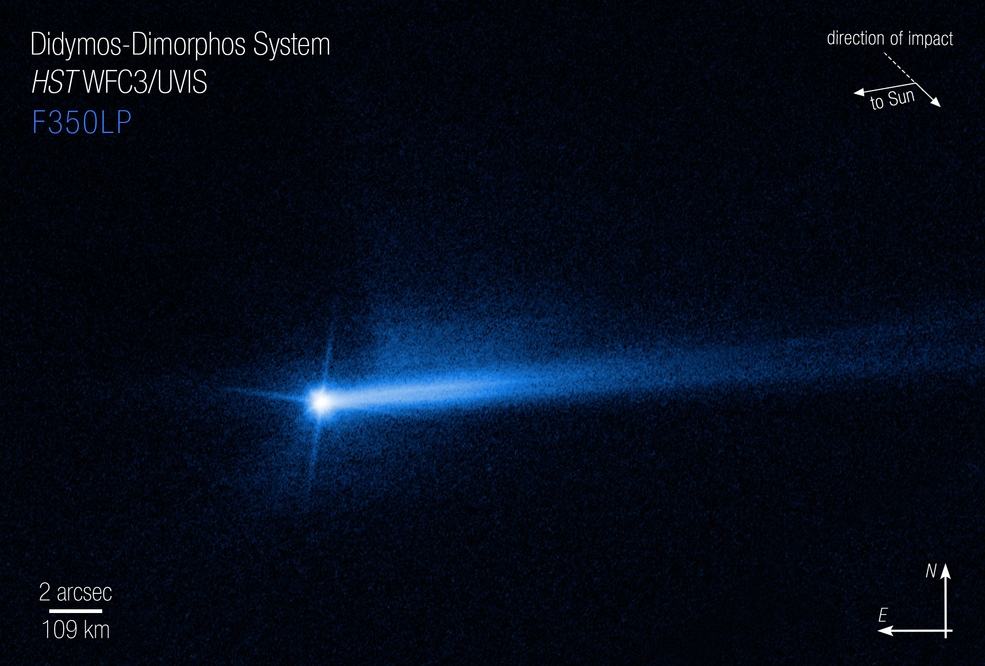
HOUSTON—New imagery from the Hubble Space Telescope (HST) has revealed an unexpected second trail of debris emerging from Dimorphos, the asteroid target for NASA’s Double Asteroid Redirection Test (DART) mission impact on Sept. 26.
The blow was intended to demonstrate a strategy for altering the course of an asteroid or a comet on a trajectory to collide with Earth. It changed the 11-hr., 55-min. orbital period of Dimorphos around its larger companion asteroid, Didymos, by about 32 min., much greater than the up to 10-min. change estimated prior to the encounter.
Early post-impact imagery also revealed an emerging trail of debris coming from the 560-ft.-wide Dimorphos similar to that of a comet tail and potentially influenced by interactions with solar activity.
Over the course of 18 post-impact observations made by the HST, a second tail formed between Oct. 2-8, according to a NASA DART mission update provided on Oct. 20. The ejecta has both expanded and faded in brightness over time.
“The twin tail is an unexpected development, although similar behavior is commonly seen in comets and active asteroids,” the Oct. 20 update said. “The relationship between the comet-like tail and other ejecta features seen at various times in images from Hubble and other telescopes is still unclear, and is something the investigation team is currently working to understand. In the coming months, scientists will be taking a closer look at the data from Hubble to determine how the second tail developed. There are a number of possible scenarios the team will investigate.”
Throughout the mission, NASA has emphasized that neither Dimorphos nor its larger companion, Didymos, poses an impact threat to Earth. The refrigerator-sized DART impactor struck its target, whose structure was a bit of a mystery, at a velocity of 14,000 mph.
